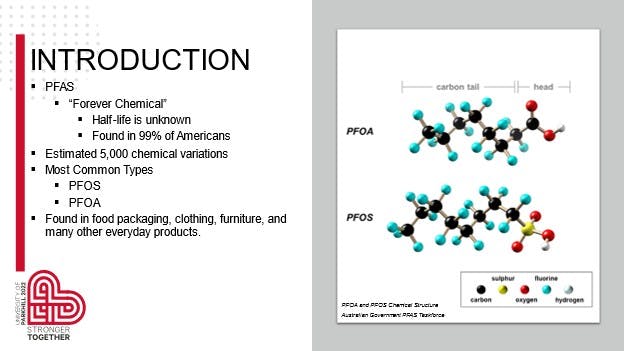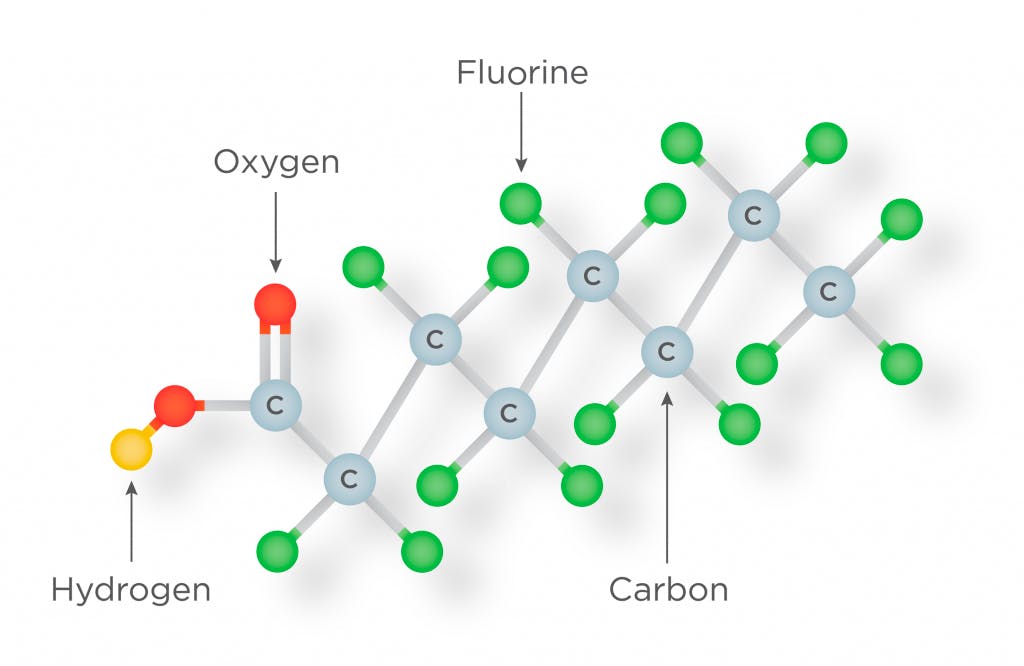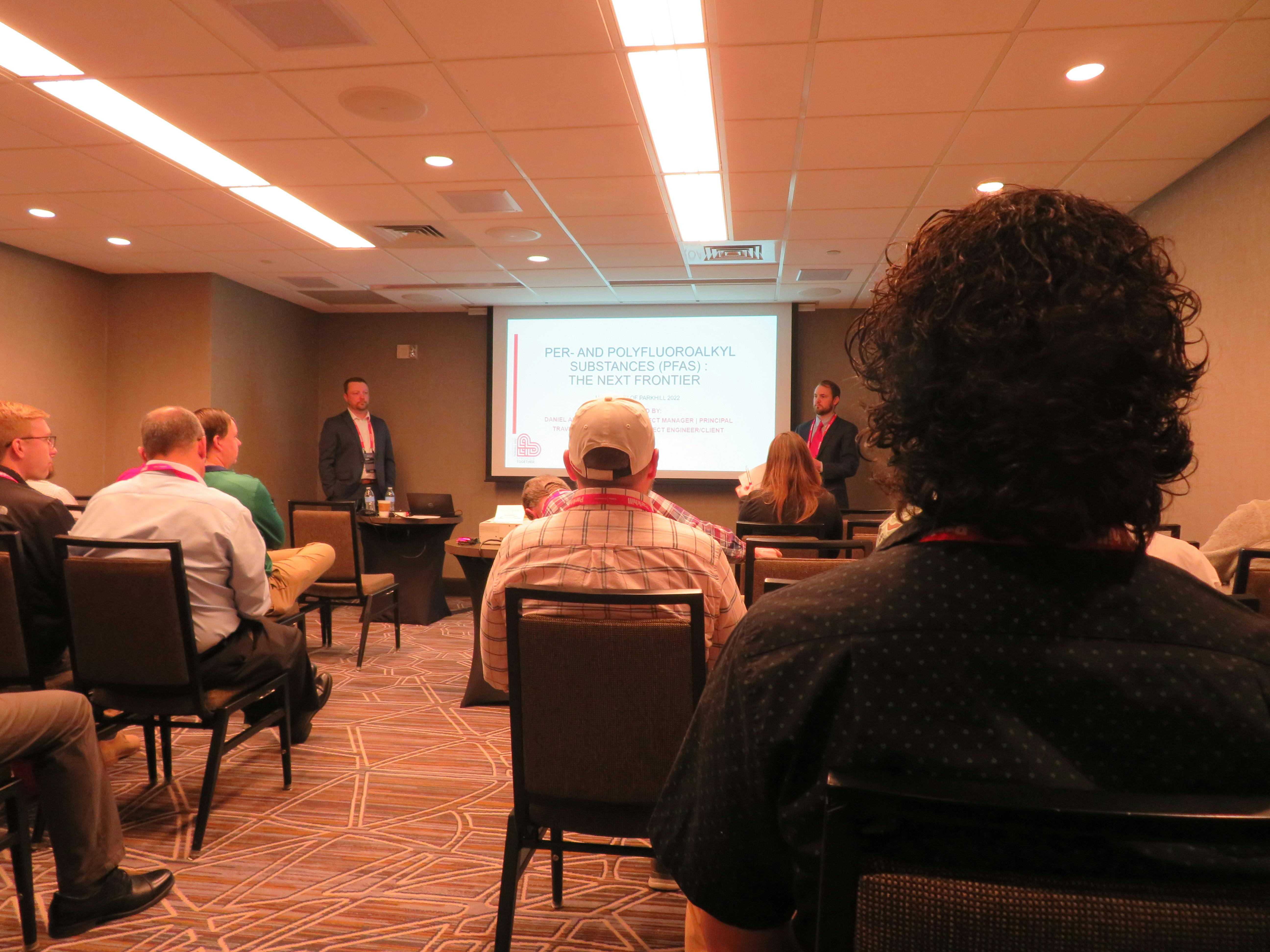University of Parkhill 2022: PFAS - The Next Frontier
Category: University Of Parkhill
Written By: Daniel Albus, PE, & Travis Archer, PE
Date: May 18, 2022

According to Water and Wastes Digest, PFAS – technically known as per- and polyfluoroalkyl substances – can cause a wide range of health defects. Studies have consistently linked PFAS to increased cholesterol levels, low birth weight in infants, thyroid hormone disruption, and increased risk of prostate, kidney, and testicular cancer.
 PFAS, a family of chemicals, is prevalent in our bodies and the environment. Two of Parkhill’s engineers, Daniel Albus, PE, a Principal and Senior Project Manager in the Treatment Practice, and Travis Archer, PE, a civil engineer in the Treatment Practice and formerly with the Oklahoma Department of Environmental Quality, are educated about the subject. They touched on the complexity of the problem in their presentation “PFAS: The Next Frontier” at the 2022 University of Parkhill. They both possess a contagious passion and informed insight, two of Parkhill’s Collective Values.
PFAS, a family of chemicals, is prevalent in our bodies and the environment. Two of Parkhill’s engineers, Daniel Albus, PE, a Principal and Senior Project Manager in the Treatment Practice, and Travis Archer, PE, a civil engineer in the Treatment Practice and formerly with the Oklahoma Department of Environmental Quality, are educated about the subject. They touched on the complexity of the problem in their presentation “PFAS: The Next Frontier” at the 2022 University of Parkhill. They both possess a contagious passion and informed insight, two of Parkhill’s Collective Values.
"Both of the presenters obviously have a great deal of knowledge on the subject," said an attendee of the course, "and I was encouraged to see that we have such excellent resources at Parkhill.”
The CDC found that more than 99% of participants studied have detectable levels of some type of PFAS. The uniqueness of PFAS is that there are thousands of different ones, and they are often called “the forever chemicals” because they bioaccumulate, especially in certain fish.
 “The multifaceted nature of PFAS and the ever-changing science and regulatory landscape requires informed insight,” Travis added. “I thought this course was important because of the quickly evolving nature of PFAS. From the available/upcoming analytical methods to detect PFAS to the treatment technologies and ultimate disposal methods being developed, I thought it was the perfect time to help make sure our colleagues understand the potential challenges posed by PFAS.”
“The multifaceted nature of PFAS and the ever-changing science and regulatory landscape requires informed insight,” Travis added. “I thought this course was important because of the quickly evolving nature of PFAS. From the available/upcoming analytical methods to detect PFAS to the treatment technologies and ultimate disposal methods being developed, I thought it was the perfect time to help make sure our colleagues understand the potential challenges posed by PFAS.”
Origins
PFAS are seen as the perfect building block material for industrial products and are used for food packaging, clothing, furniture, nonstick cookware, and firefighting foam. But it is extremely mobile and difficult to remove. PFAS were first studied in Teflon products. The chemical has a 3D shape with a carbon-atom tail.
“It is known as one of the strongest bonds in nature,” Daniel said.
A Historic Point in Time
Experts are anxiously awaiting the EPA’s national regulations for PFOA and PFOS.
The EPA may not want PFAS in effluent to be burned at over 1,000 degrees, which is one of the ways engineers and scientists have found to destroy it so far.
The issue of PFAS is at a pivotal point in the industry.
“There hasn’t been a new class of contaminants in 30 years,” Travis said.




